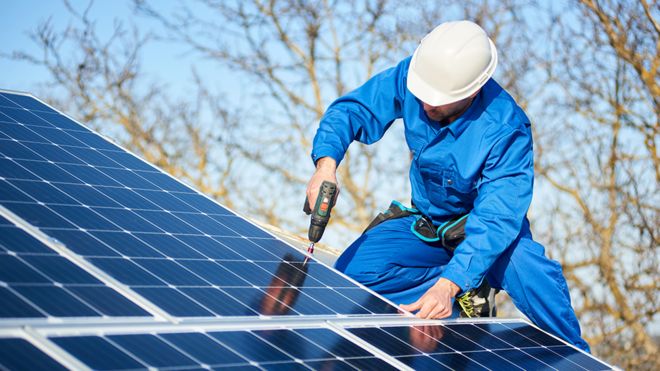Updated on 2021-06-16 by Adam Hardy
There are two big “Green New Deals” on the table: the US Democrats want one and are planning to bring it in next year, assuming they can win the November election and there’s the European Green New Deal, championed by Ursula von der Leyen, the new president of the European Commission.
The BBC ran an article last month describing how a Green New Deal could provide massive investments in infrastructure and jobs to lift COVID-19-struck economies out of recession and simultaneously kickstart real action on the energy transition and CO2 emissions reduction to combat global warming and climate change.
The original “New Deal” is what Franklin D. Roosevelt did in the 1930’s in the USA to lift America out of the Great Depression.
A New Deal involves infrastructure programs and projects and financial reforms and regulations on a huge scale and in America in the 1930s it worked. According to traditional economic theory though, large amounts of government spending without matching taxation leads to unmanageable debt and uncontrolled inflation.

In America in the 1930s, this didn’t happen because World War II broke out and the US economy was put on a war footing, with market controls, rationing and heavy government control.
Could it work now? There is a similar situation. We are still affected by the repercussions of the 2008 financial crash and credit crunch. There may not be a global war on the horizon, but we do have the threat of climate change.
And what of the threat of spiralling government debt and uncontrolled inflation? The European Green New Deal will control and re-purpose €750 billion, and the US Democrats are pushing as I write for $1.5 trillion for a green COVID-19 recovery package.
%2Farc-anglerfish-washpost-prod-washpost%2F45KMDIFLJQI6VJB3X2PWJFFIPU.jpg&w=908)
The Democratic contenders for the presidential campaign were talking about figures 10 times this amount over 10 years. Isn’t that economic suicide?
Apparently not. According to Modern Monetary Theory, one of the new economic theories vying to take over the now debunked neo-classical or Chicago School of economics, any government with a fiat currency and control over the money supply can run a deficit indefinitely. This would explain how America has run up such a huge deficit since 1980 with no apparent adverse effects.
World leaders are beginning to wonder whether the United Nations IPCC (the top authority on climate change science) may have severely underestimated the costs to the economy of climate change impacts. The economic research it relies on, distinguished with Nobel Prizes, is now facing heavy criticism for its massive oversimplifications. The costs of climate change damages in US dollars is mounting continuously.
The human cost is horrendous, as droughts, floods and rising sea levels creates millions of climate refugees. As populism spreads across the world, national leaders are well aware that waves of refugees will stoke nationalist tensions.
So the stage is set: political leaders have every reason to believe a Green New Deal can be successful, and they have every reason to believe that tackling climate change is next great challenge that must be confronted.
There are many areas where it is obvious that massive investments can be made: tidal power stations; offshore windfarms; reforestation; electric vehicle charging networks; smart electric grids; high speed rail networks.
Green New Deal Optimism Tempered
It sounds magnificently optimistic, a true panacea for the pandemic – but there are still issues. There are major stumbling blocks to the roll-out of a carbon-neutral economy. Many of the solutions we imagine don’t exist yet: a power grid that supplies energy when needed and not just when the sun shines or the wind blows (batteries or hydrogen?); electric vehicles that everyone can afford (a Tesla Mini?); aviation fuel that is carbon-neutral (bio-fuel?); shipping fuel (ammonia?); old Victorian housing stock zero energy upgrades; carbon capture for gas power stations. The list goes on.
There is one major point that governments miss. Low carbon finance is broken and anything but small projects fail to get funding. The investors won’t lend the money until they see the market for the product and the potential return on investment. The chicken and the egg.
We have given ourselves 30 years to fix the climate crisis. If we want to see innovation and inventions that will take a Green New Deal into a truly green future, we need to create the green market. A ‘carbon price’ created through carbon taxes is the current in-vogue solution, but this is a weak policy and has no chance of controlling fossil fuel supply, should the effects of climate change worsen still.
What is needed is carbon rationing, where citizens decide where they spend their carbon rations, promoting any product or service that is sold with a lower carbon ration price. It has the added advantage of creating an effective control on fossil fuel supply if it became clear that we needed to radically reduce CO2 emissions even faster.




